News
New data shows extremely critical levels of malnutrition in parts of northwest Nigeria
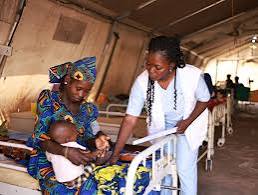
New data shows extremely critical levels of malnutrition in parts of northwest Nigeria
By:Our Reporter
Extremely critical levels of malnutrition found in the conclusions of a survey done by the humanitarian medical organisation Médecins Sans Frontières (MSF) / Doctors Without Borders. The survey was conducted on 2,066 children of three local government areas (LGA) of Katsina State, in collaboration with Epicentre (MSF’s epidemiology arm) and the Katsina State Ministry of Health. It shows that in some areas, levels of global acute malnutrition have doubled since last year, when the situation was already considered dire. Aid in this region has never been enough to meet the needs and is now decreasing even further. MSF draws attention to the immediate additional support needed to avoid a deadlier catastrophe in 2025.
The survey was done in July in the LGAs of Katsina, Jibia and Mashi shows a major nutritional crisis underway with over 30 per cent of children suffering from global acute malnutrition (GAM) in some areas and severe acute malnutrition (SAM) rates — the most dangerous form of malnutrition — between 6.8 per cent and 14.4 per cent. People in these areas are at the extremely critical level of malnutrition according to the integrated food security phase classification for acute malnutrition. MSF has continued to see an increase in malnutrition admissions since the survey was conducted.
This survey has been carried out yearly since 2022 at the same period in the same areas and with the same methodology to estimate the prevalence of acute malnutrition in children aged six months to almost five years of age, the GAM levels in the first survey were 22 per cent. Nutritional status of children six to 59 months was assessed using a combination of three methodologies: mid-upper arm circumference (MUAC), bilateral pitting oedema, and weight-for-height z-score (WHZ).
“These survey results are, quite frankly, terrifying. We have seen figures rising steadily for the past couple of years and now we are moving from critical to extremely critical levels. In one area of the state, Mashi LGA, we found 14% of children we surveyed were severely malnourished, prevalence this high is catastrophic. We really need to see more, not less action from organisations, otherwise we are going to see children dying in record numbers,” says Dr, Raphael Kananga, MSF Medical Coordinator.
As a result of this situation, MSF, which runs four therapeutic treatment centers for malnourished children in Katsina state, has provided care to more children this year, in more severe states of malnutrition, of which more had to be hospitalised. In total, our medical teams have attended more than 100,000 malnourished children from January until now, which represents a 20 per cent increase compared to the same period last year. Admissions for hospitalisation have increased by more than 50 per cent compared to 2022 and 2023, and more than 800 children could not be saved due to too severe conditions and died in our facilities in Katsina state between January and September 2024.
The projections of a further deterioration in food insecurity for the near future are also very worrying. Inflation is currently very high in Nigeria, the devaluation of the local currency is continuing, agricultural yields have strongly decreased again this year. The cost of living is increasing, insecurity remains a concern in several parts of the region, and climate events are expected to continue – impacting livestock and crops. All of these factors mean that if no additional support is set in place, MSF fears a deadlier catastrophe in 2025. However, despite the huge increases in prevalence of global acute malnutrition, for example by over 75 per cent in Jibia LGA, one area surveyed, Katsina state, along with the rest of the northwest region is still not included in the UN’s humanitarian response plan for Nigeria.
Earlier this year, MSF conducted a mass screening in several areas of Zamfara state and found 27 per cent of children suffering from global acute malnutrition. This is a trend we are seeing across all our nutrition facilities in northern Nigeria. Overall, MSF medical teams responding in seven states spanning northern Nigeria have treated 294,000 children for malnutrition between January – September this year. This is 43 percent higher than the number of children treated in that same period in 2023.
Despite this, global funding cuts are reducing organisations’ ability to respond and treat children with malnutrition. Insufficient amounts of therapeutic food globally have been a challenge over the last year and are still worsening. In some areas, such as Zamfara, there have only been limited supplies available since March. UNICEF has recently launched a global appeal with fears that nearly two million children across 12 countries are at risk of death due to these shortages.
“We have consistently raised the alarm about the escalating malnutrition crisis in northern Nigeria, and the findings of recent surveys confirm our worst fears—conditions have not improved; they have significantly deteriorated. This year, our teams across locations such as Kebbi, Zamfara, Katsina, and Maiduguri have been overwhelmed by an unprecedented number of malnourished children requiring urgent care. We have utilised every available resource, from overflow tents to spare mattresses, to manage the influx of patients arriving at our hospitals. Without meaningful and immediate action, I fear the situation could worsen dramatically in the coming year. We recognise the Federal Ministry of Health and Social Welfare’s recent and ongoing efforts towards tackling malnutrition. If all stakeholders increase funding and ensure a reliable supply of therapeutic food, there is hope that we can save the lives of many children next year.” Dr. Simba Tirima, Country Representative for MSF in Nigeria.
MSF runs nutrition projects in seven states in Nigeria: Borno, Bauchi, Katsina, Kano, Sokoto, Zamfara and Kebbi. This involves 10 inpatient facilities including those in Maiduguri, and in Katsina city and over 30 outpatient feeding centres across these states to treat children with moderate and severe malnutrition who do not need to be admitted to hospital.
New data shows extremely critical levels of malnutrition in parts of northwest Nigeria
News
Troops neutralise bandit, recover arms in Plateau raid
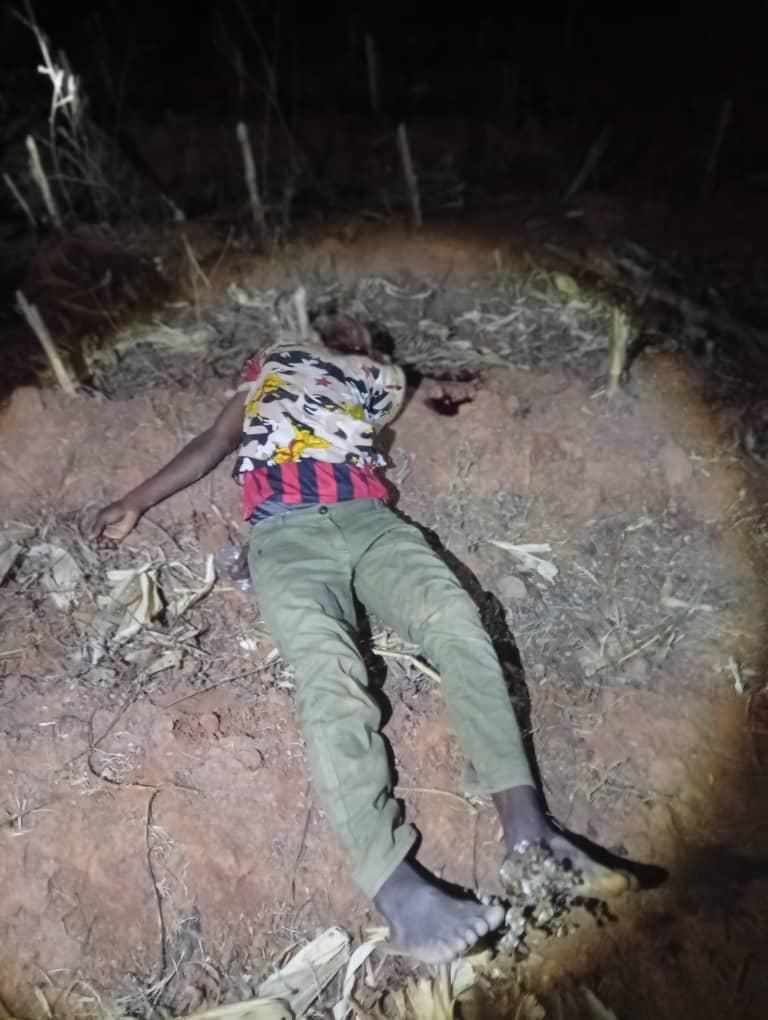
Troops neutralise bandit, recover arms in Plateau raid
By: Zagazola Makama
Troops of 3 Division of the Nigerian Army, under the Joint Task Force Operation Enduring Peace (JTF OPEP), have neutralised a notorious bandit and recovered arms and ammunition during a raid on a hideout in Plateau State.
Sources told Zagazola Makama that the operation was conducted on Jan. 8 at Yolan Gboka–Yama Da Lahdi, following sustained efforts to track and arrest perpetrators of the Dec. 16, 2025 attack on illegal miners at Tosho community in Fann District, Barkin Ladi Local Government Area.

According to the sources, troops made contact with the bandits during the raid and engaged them in a firefight.
“One of the bandits was neutralised during the exchange of fire and was later identified as Sadiq Isah, while others fled the area,” the sources said.
The sources added that troops subsequently exploited the hideout and recovered two AK-47 rifles and 162 rounds of 7.62mm (special) ammunition.
The recovered arms and ammunition are currently in military custody, while troops have commenced follow-up operations to intercept the fleeing suspects and prevent further criminal activities in the area.
Zagazola reports that Operation Enduring Peace is a joint security initiative aimed at restoring peace and stability across Plateau and neighbouring states.
Troops neutralise bandit, recover arms in Plateau raid
News
FG Urges NSCDC to Boost Intelligence as Interior Minister Decorates 113 Senior Officers

FG Urges NSCDC to Boost Intelligence as Interior Minister Decorates 113 Senior Officers
By: Michael Mike
The Federal Government has called on the Nigeria Security and Civil Defence Corps (NSCDC) to strengthen intelligence gathering and operational readiness in the face of rising security threats across the country.
The call was made by the Minister of Interior, Dr. Olubunmi Tunji-Ojo, during a ceremony to decorate 113 newly promoted NSCDC commandants. The minister, represented by the Secretary of the Civil Defence, Corrections, Fire and Immigration Services Board (CDCFIB), Maj. Gen. Abdulmalik Jibrin (Rtd), commended the Corps for its role in protecting critical national infrastructure, lives, and property.

Tunji-Ojo emphasized the need for strategic intelligence mapping to counter emerging threats, particularly as the Corps now shoulders additional responsibilities for the protection of Very Important Personalities (VIPs), a role previously managed by the Nigeria Police Force.
He encouraged the newly promoted officers and all personnel to uphold the confidence placed in the service by President Bola Tinubu, noting that the merit-based promotions are designed to boost morale and enhance performance.
The Commandant General of NSCDC, Professor Ahmed Audi, urged the officers to mentor subordinates, embrace leadership responsibilities, and adhere strictly to merit-based postings. He warned against lobbying for preferred postings, affirming that performance and dedication would guide all administrative decisions.
Representing the promoted officers, Commandant Ekanem Ekpenyong pledged unwavering commitment to duty, promising to uphold integrity and the Corps’ Oath of Allegiance.
In a key highlight of the ceremony, the Corps’ National Public Relations Officer, Afolabi Babawale was promoted to the rank of Assistant Commandant. The event also featured goodwill messages from the Controller General of Corrections, the Controller General of the Federal Fire Service, and representatives from the Nigerian Army, Navy, Air Force, Police, and the Department of State Services.
The ceremony underscored the Federal Government’s resolve to strengthen the NSCDC and reinforce its role in Nigeria’s security architecture.
FG Urges NSCDC to Boost Intelligence as Interior Minister Decorates 113 Senior Officers
News
Zulum commissions remodelled ‘2nd chance school’ for vulnerable girls

Zulum commissions remodelled ‘2nd chance school’ for vulnerable girls
.Disburses N1bn to SMEs in 5 LGAs
By: Our Reporter
Borno State Governor, Professor Babagana Umara Zulum, on Thursday commissioned a fully remodelled “Second Chance School” for vulnerable girls and women in Biu Local Government Area.
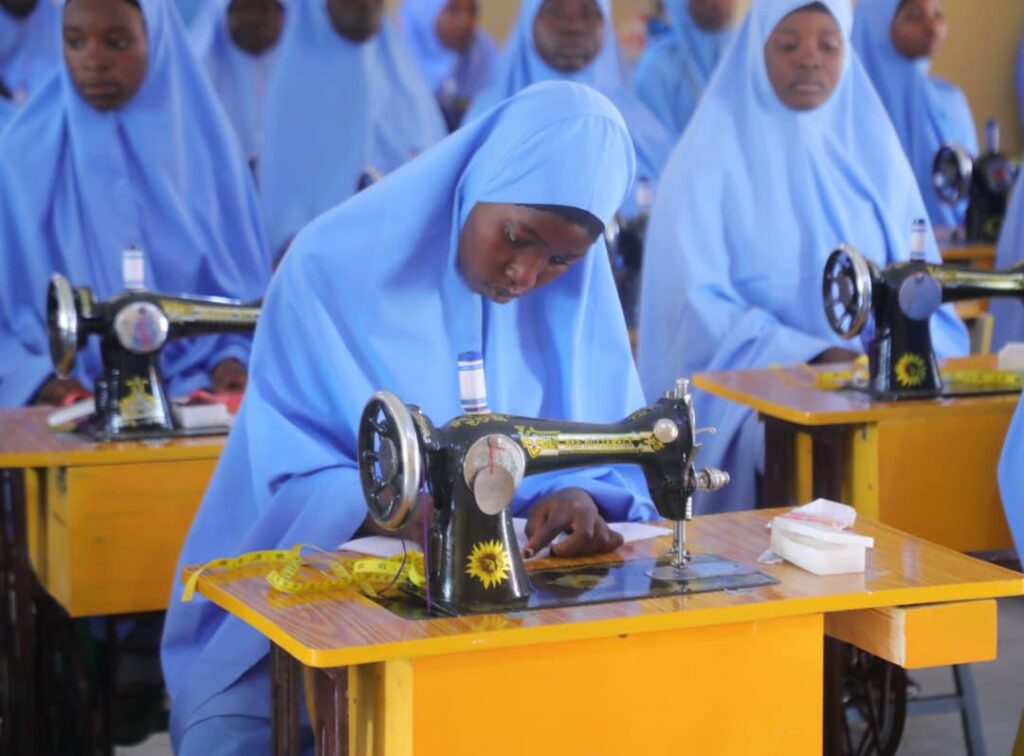
The newly inaugurated facility is part of a strategic initiative designed to offer adult women, including those who missed formal education or dropped out of school due to prevailing challenges, a pathway to self-reliance.
The school’s curriculum is tailored towards providing comprehensive skills’ acquisition, critical digital knowledge and basic literacy, and numeracy training.
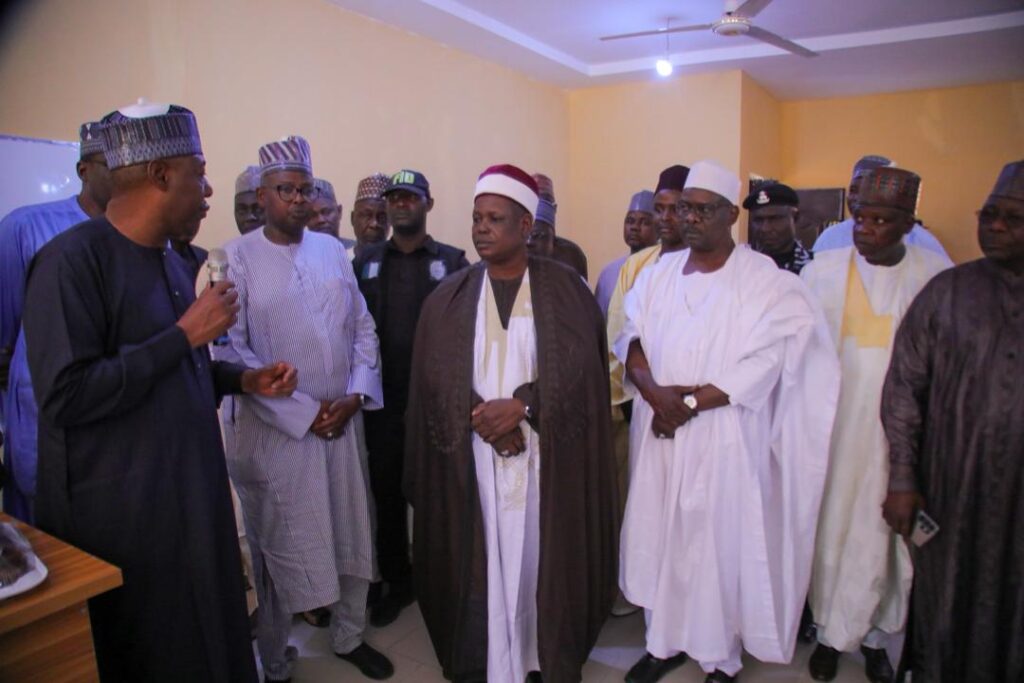
With the Biu centre now operational, Zulum’s administration has established three such schools across the state, with existing centres already operational in Maiduguri and Bama.
Meanwhile, Governor Zulum has disbursed N1 billion to small and medium-scale enterprises (SMEs) across five local government areas in southern Borno.
The targeted LGAs include Biu, Hawul, Shani, Bayo and Kwaya-Kusar, with the funds intended to support entrepreneurs and enhance business sustainability.
Zulum explained that the direct injection of capital into the SME sector is essential for driving grassroots development and fostering self-reliance in the post-insurgency recovery phase.
In a related development aimed at tackling youth restiveness and promoting social stability, Governor Zulum has ordered immediate employment of 200 young individuals from the Biu Local Government Area.
After the inauguration, Zulum visited Biu Specialist Hospital where he announced the immediate and automatic employment of a number of dedicated volunteer health workers who have served tirelessly.
He also inspected the 100-unit teachers’ housing estate under construction in Biu town. The estate is part of the Borno State Government’s motivational strategy to attract and retain qualified teaching professionals in public schools.
Governor Zulum has also directed immediate commencement of rehabilitation work on the Borno State Hotel Annexe in Biu.
Zulum commissions remodelled ‘2nd chance school’ for vulnerable girls
-

 News2 years ago
News2 years agoRoger Federer’s Shock as DNA Results Reveal Myla and Charlene Are Not His Biological Children
-

 Opinions4 years ago
Opinions4 years agoTHE PLIGHT OF FARIDA
-

 News9 months ago
News9 months agoFAILED COUP IN BURKINA FASO: HOW TRAORÉ NARROWLY ESCAPED ASSASSINATION PLOT AMID FOREIGN INTERFERENCE CLAIMS
-

 Opinions4 years ago
Opinions4 years agoPOLICE CHARGE ROOMS, A MINTING PRESS
-
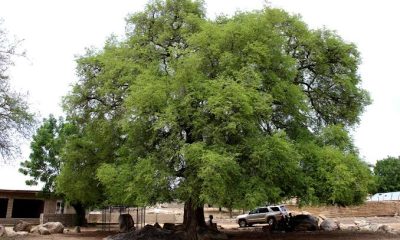
 News2 years ago
News2 years agoEYN: Rev. Billi, Distortion of History, and The Living Tamarind Tree
-

 ACADEMICS2 years ago
ACADEMICS2 years agoA History of Biu” (2015) and The Lingering Bura-Pabir Question (1)
-

 Columns2 years ago
Columns2 years agoArmy University Biu: There is certain interest, but certainly not from Borno.
-

 Opinions2 years ago
Opinions2 years agoTinubu,Shettima: The epidemic of economic, insecurity in Nigeria





